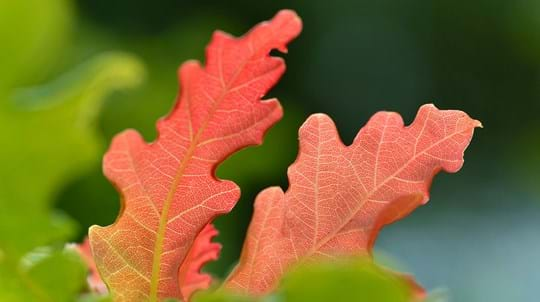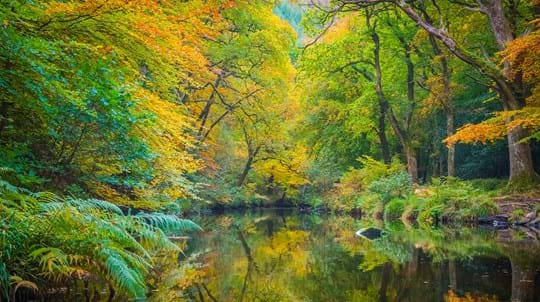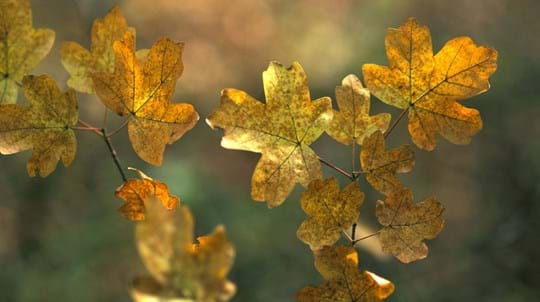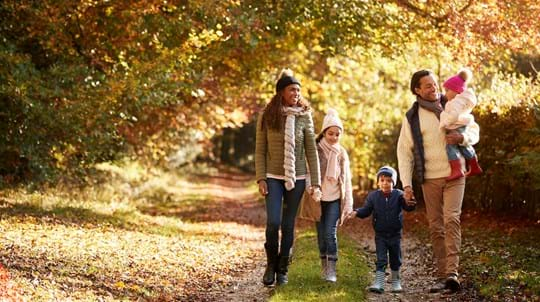
Blog
Why do leaves change colour and fall off in autumn?
Helen Keating • 02 Oct 2020

Content manager
As summer draws to a close, there are many signs that nature is already gearing up for the next season. And what a spectacular season it is – autumn is nature’s last hurrah before the cold, bleak winter months, and it celebrates in a blaze of golden glory. But when does autumn really start, and what are the key signs to look for?
Technically, autumn has two start dates:
It might not necessarily feel like autumn on these specific dates - warm weather may give the impression of an extended summer, or icy blasts can seem like the early onset of winter. But many changes in nature happen around these times to indicate autumn. Here are some of the best ones to look out for.
A dazzling display of gold or crimson leaves is one of the defining features of autumn. If you look up into the tree canopy you may already see the first leaves beginning to turn.
This annual event is triggered by autumn’s cooler temperatures and shorter days. When there’s less sunlight, deciduous trees stop producing chlorophyll, which they use to convert light into energy to grow. Chlorophyll is the pigment that gives leaves their green colour. When production slows down, the chlorophyll fades and yellow and red pigments are revealed.
Many birds, including nightingales, cuckoos, swifts and swallows fly south to warmer climates for the winter. Look out for huge flocks of swallows lining up on telegraph wires ready for their 6,000 mile journey to South Africa – it will take them six weeks!
Before long we’ll start to see some arrivals too. Redwings, fieldfares, waxwings and some types of duck and geese head to the UK from colder countries like Iceland and Scandinavia.
Late August to early September is prime time for blackberries. These sweet, juicy fruits are delicious in cakes and crumbles – look for the berries ripening in bramble bushes and check out our scrummy blackberry recipes.
The hedgerows will soon be groaning with other mouth-watering delights too. Keep your eyes peeled for ripe elderberries, sloes, rosehips and wild raspberries.
Remember to leave plenty for wildlife. Badgers, foxes and small birds all feast on these fruits in autumn, and they provide a valuable source of energy and nutrients.
Take a closer look at the dark green ivy trailing over trees, old buildings and garden walls and you’ll see little clumps of yellow-green flowers. Ivy is one of the few plants to flower in the autumn, so it’s very important for pollinators like bees and butterflies that are still active at this time. On a warm, sunny autumn day you’ll see lots of insects buzzing around it, feasting on the nectar.
In autumn, many tree seeds ripen and fall to the ground. Look out for plump acorns, shiny, brown conkers, and prickly beech mast nestled in the leaf litter at your feet. Some trees rely on the wind to spread their seeds – can you spot papery field maple seeds twirling in the wind?
Fungi can be highly poisonous, so it’s best to look but not touch.
Damp weather provides ideal conditions for fungi to grow, so autumn is when many species thrive. They come in an amazing range of colours and some very peculiar shapes. Even more weird are the names – from amethyst deceiver to dead man’s fingers and lemon disco to bearded tooth, these fabulous fungi really capture the imagination.
The Nature's Calendar project tracks the effects of weather and climate change on wildlife across the UK – its records date all the way back to 1736!
Join Nature’s Calendar to record the signs of autumn you've seen, from leaves changing colour to birds migrating. The data you provide helps us to better understand the effects of climate change and other patterns in the natural environment. By taking just a few minutes to share what you see, you'll be adding to hundreds of years' worth of important data. We couldn't do this work without you!

Help monitor the effects of climate change on wildlife near you. Your records contribute to a growing body of evidence on global warming.
Add your wildlife recordings
Visiting woods
A visit to autumnal woods is always a treat. Listen to leaves crunch beneath your feet and get swept away in all that this season has to offer.

Blog
Helen Keating • 21 Sep 2020

Blog
Hannah Vickers • 01 Oct 2020